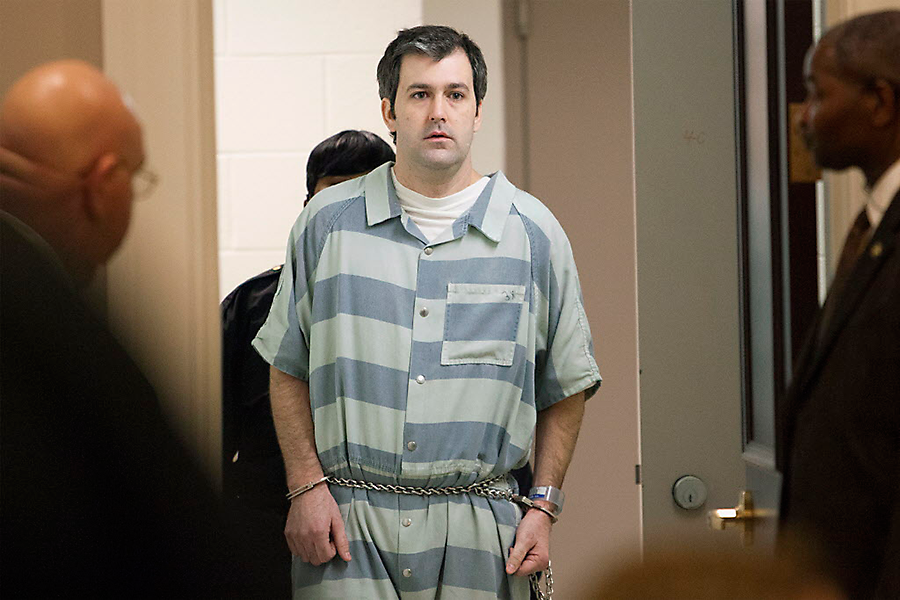Video takes center stage in Charleston and Cincinnati police murder trials
Loading...
The trials of two, white, former police officers facing separate murder charges begin this week. There are numerous similarities between the two cases. Both officers are white and the victims black. Both incidents occurred during what, by many accounts, should have been routine traffic stops. And in both cases, video footage is likely to take center stage.
A body camera worn by former University of Cincinnati Police Officer Ray Tensing shows all of his 2015 encounter with Samuel DuBose, the black man he is on trial for shooting. In the case of former Charleston Police Officer Michael Slager, a grainy cellphone video filmed by a bystander shows Walter Scott running away as the officer shoots him in the back.
Both videos helped make the case for police wearing cameras as a way to help create more accountability and improve policing practices to help heal the racial divides of this country. But the videos, themselves, could play different roles in the trials. The body-camera footage of Mr. Tensing has been used to refute his and two other officers’ accounts of the confrontation. In Mr. Slager's case, the footage also challenges the officer's original statements, but Slager's defense has already seized on what his attorneys say is the incomplete record of the video. It doesn’t show the moments leading up to the shooting, during which, attorneys say, Mr. Scott made Slager fear for his life.
For the April 2015 shooting, Slager is charged with a state murder count. Jury selection begins today Monday. In the trial of Tensing, juror questioning starts Monday, opening arguments could begin Tuesday, and testimony is set to begin Nov. 7, according to USA Today. Tensing has been charged with murder.
The Tensing trial stems from an incident in July 2015. In a neighborhood near the University of Cincinnati campus, Officer Tensing pulled over Mr. DuBose for a missing front license plate. Tensing said he fired at DuBose because he feared for his life. DuBose started to speed off, he said, and he was afraid he would be pulled under the car. Tensing’s account was corroborated by two of his fellow officers who linked Tensing falling back from the car to minor injuries he sustained. But prosecutors have said Tensing’s body camera suggests another scenario.
In the video, DuBose starts the car and slowly rolls away when Tensing appears to suddenly fire a single shot. Tensing, officials say, fell backward after he fired the gun, causing some scuffs on his shirt and pants.
“As a growing number of police departments are equipping officers with digital body cameras, the so-called blue wall of silence, the unwritten rule that officers never speak ill of one another to outsiders, is being tested perhaps like never before,” the Christian Science Monitor’s Patrik Jonsson wrote at the time.
Tensing has pled not guilty.
While the video of Officer Slager in Charleston challenges his own account of the confrontation, prosecutors are expected to seize on the incompleteness of the video. In April 2015, Slager appears to shoot Scott after Slager said Scott reached for his Taser during a traffic stop for a broken taillight. Slager said he felt threatened.
The former police officer, who was fired shortly after the video surfaced, has come under criticism for both his quick use of force and his decision to handcuff Scott, instead of administering CPR. Slager is a veteran emergency medical technician officer.
But last week, Slager's lawyer, Andy Savage, said the defense had "thoroughly examined" the cellphone video, and he asserted that it contained a "distortion," according to NBC News.
“The video is far from the only evidence in the case, but there's no doubt it will play a major role in the trial,” writes CNN’s Catherine Shoichet. “The defense argues it doesn't clearly depict the lead-up to the shooting – key moments that they say show Slager was acting in self-defense after Scott tried to grab his Taser.”
"The video of the fight is blurry and indistinct, while the video of the shooting itself is clear. As a result, the video is rarely if ever, shown in its entirety," the defense said in a recent motion obtained by WCSC-TV in Charleston.
The two trials come as the nation confronts questions about the relationship between police and black communities. Since 2015, about a quarter of the 1,700 people shot and killed by police have been black, according to The Washington Post. Black Americans are also twice as likely to be shot and killed by police as white Americans.
According to a recent presidential task force on policing reform, body cameras should be part of making police work more transparent and more trustworthy for Americans, especially in poorer, crime-ridden areas.
“To be sure, body cameras are far from a panacea for police misconduct. And video isn’t always decisive,” Mr. Jonsson of the Monitor wrote. “But video can also give prosecutors the hard evidence they need to override deflections by police officers who go beyond the constitutional protections they enjoy. Those protections include US Supreme Court rulings that give officers wide leeway to make mistakes as they make split-second life-or-death decisions.”
[Editor's note: The original story repeated an incorrect report about police lying in the Cincinnati shooting. Initial police report notes said that "Kidd and his partner said that they witnessed Tensing being dragged by Dubose’s car, they later told investigators in in-depth interviews that they did not witness it. UCPD later said - and a grand jury agreed - that it was a mistake in the police report, not a lie by the officers," reported WLWT of Cincinnati.]







